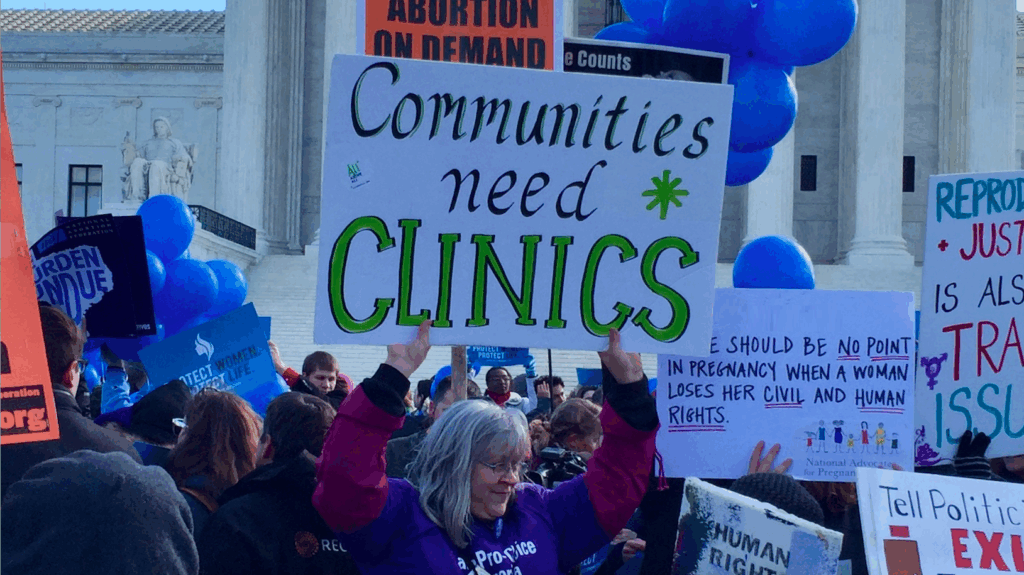Maine Clinics Will End Primary Care Services Tomorrow Due to Loss of Medicaid Funds – Center for Reproductive Rights

Report on the Cessation of Primary Care Services by Maine Family Planning and its Impact on Sustainable Development Goals
1.0 Executive Summary
This report details the termination of primary care services by Maine Family Planning (MFP), the state’s largest family planning clinic network. The cessation is a direct result of the withdrawal of Medicaid funding by the Trump administration, a policy targeting providers of abortion services. This action creates significant challenges to the achievement of several Sustainable Development Goals (SDGs), particularly SDG 3 (Good Health and Well-being), SDG 5 (Gender Equality), and SDG 10 (Reduced Inequalities). The loss of these services disproportionately affects low-income and rural populations, undermining progress towards universal health coverage and equitable access to essential healthcare.
2.0 Background: Funding Withdrawal and its Rationale
The Trump administration revoked Medicaid funding for Maine Family Planning and Planned Parenthood due to their provision of abortion care alongside other health services. This policy has had a severe financial impact on MFP, which historically received approximately $1.9 million in annual Medicaid reimbursements. This funding was critical for serving its patient base, half of whom rely on Medicaid coverage. The withdrawal of these funds has rendered the primary care practice financially unsustainable, leading to its closure.
3.0 Impact on Healthcare Access and SDG 3: Good Health and Well-being
The closure of MFP’s primary care practices directly contravenes the objectives of SDG 3, which aims to ensure healthy lives and promote well-being for all at all ages.
- Disruption of Universal Health Coverage (Target 3.8): The termination of services for over 600 primary care patients in Presque Isle, Houlton, and Ellsworth places additional strain on an already overstretched healthcare system in a rural state. This action moves the community further away from the goal of universal health coverage by creating new barriers to accessing primary care providers.
- Impediment to Sexual and Reproductive Health (Target 3.7): While MFP will continue to offer family planning and reproductive health services, the financial instability caused by the defunding jeopardizes their long-term viability. This threatens universal access to essential services such as STI testing, cancer screenings, and birth control, which are integral to achieving SDG Target 3.7.
- Increased Health Disparities: The loss of accessible healthcare providers forces patients to either forego care or seek it from facilities that are fewer and farther between. This is particularly detrimental in rural areas and can lead to poorer health outcomes, contrary to the overarching goal of SDG 3.
4.0 Wider Implications for Sustainable Development
The consequences of this policy extend beyond public health, affecting a range of interconnected SDGs.
- SDG 5 (Gender Equality): Limiting access to a comprehensive range of reproductive and primary healthcare services disproportionately affects women. It undermines their ability to make informed decisions about their health and well-being, which is a critical component of achieving gender equality.
- SDG 10 (Reduced Inequalities): The policy exacerbates inequalities by targeting services essential for low-income individuals and those in geographically isolated areas. Approximately 70% of MFP’s patients rely exclusively on its clinics for healthcare, highlighting the policy’s severe impact on vulnerable populations and widening the gap in healthcare access.
- SDG 1 (No Poverty): Access to family planning and primary care is a key factor in breaking cycles of poverty. The inability to access these services can lead to unplanned pregnancies and unmanaged health conditions, creating significant financial burdens for individuals and families.
- SDG 16 (Peace, Justice and Strong Institutions): The ongoing lawsuit filed by the Center for Reproductive Rights to restore MFP’s funding underscores the need for strong, just institutions. The legal challenge seeks to ensure that public health policies are equitable and that all citizens have access to justice to protect their right to healthcare.
5.0 Conclusion
The termination of primary care services by Maine Family Planning, prompted by the withdrawal of Medicaid funding, represents a significant setback for public health and sustainable development in the state. The decision directly undermines progress towards SDG 3 (Good Health and Well-being), SDG 5 (Gender Equality), and SDG 10 (Reduced Inequalities) by dismantling critical healthcare infrastructure for vulnerable communities. The long-term consequences include increased health disparities, greater strain on the remaining healthcare providers, and a reversal of progress toward achieving universal health coverage for all Mainers.
SDGs, Targets, and Indicators Analysis
1. Which SDGs are addressed or connected to the issues highlighted in the article?
- SDG 3: Good Health and Well-being: The article directly addresses this goal by discussing the closure of primary care practices and the disruption of access to essential healthcare services. The text highlights the impact on an “already overstretched healthcare system” and the potential for patients to “forego care,” which directly threatens the well-being of the community.
- SDG 5: Gender Equality: This goal is central to the article, which focuses on a “reproductive health network” and “family planning clinics.” The funding cuts are explicitly linked to the provision of abortion care, and the services affected include “STI testing, cancer screenings, and birth control,” all of which are critical components of women’s health and reproductive rights, key aspects of gender equality.
- SDG 10: Reduced Inequalities: The article emphasizes how the funding cuts disproportionately affect vulnerable populations, thereby increasing inequality. It specifies that “Half of MFP’s patients, many of whom live in rural areas, rely on Medicaid coverage,” highlighting the negative impact on individuals based on their economic status and geographic location. The struggle for “all Mainers – no matter where they live or what insurance they have – [to] access the healthcare they need” is a core issue of inequality.
2. What specific targets under those SDGs can be identified based on the article’s content?
-
SDG 3: Good Health and Well-being
- Target 3.7: By 2030, ensure universal access to sexual and reproductive health-care services, including for family planning, information and education, and the integration of reproductive health into national strategies and programmes. The article is centered on the Maine Family Planning (MFP) network, whose core mission is to provide these exact services. The funding cut directly undermines access to family planning and reproductive health services for thousands of patients.
- Target 3.8: Achieve universal health coverage, including financial risk protection, access to quality essential health-care services and access to safe, effective, quality and affordable essential medicines and vaccines for all. The revocation of Medicaid funding for MFP directly attacks this target. It removes financial protection for low-income patients and eliminates their access to essential primary and reproductive healthcare, as the article notes that “around 70% of their patients rely exclusively on MFP and will not see any other healthcare provider in a given year.”
-
SDG 5: Gender Equality
- Target 5.6: Ensure universal access to sexual and reproductive health and reproductive rights. The article’s main conflict revolves around a policy that penalizes clinics for providing abortion care, a key aspect of reproductive rights. The subsequent closure of primary care and potential disruption to services like “birth control” and “STI testing” represent a direct setback for universal access to sexual and reproductive health.
-
SDG 10: Reduced Inequalities
- Target 10.2: By 2030, empower and promote the social, economic and political inclusion of all, irrespective of… economic or other status. The policy described in the article disproportionately harms low-income individuals who rely on Medicaid and people living in “very rural areas of the state where there are no other healthcare providers.” This action actively creates barriers to healthcare, leading to the exclusion of these groups from essential services.
- Target 10.3: Ensure equal opportunity and reduce inequalities of outcome, including by eliminating discriminatory… policies and practices. The Trump administration’s policy to cut funding based on the provision of abortion services can be seen as a discriminatory practice that results in unequal health outcomes. It specifically targets clinics serving vulnerable populations, ensuring that low-income individuals and those in rural areas have fewer opportunities to access care compared to others.
3. Are there any indicators mentioned or implied in the article that can be used to measure progress towards the identified targets?
-
For Targets 3.7 and 5.6 (Access to Reproductive Health)
- Number of service delivery points: The article states that MFP operates “18 clinics across the state” and a “mobile unit.” A reduction in this number would indicate a decline in access.
- Number of patients served: The article mentions, “Around 8,000 patients receive family planning and primary care at Maine Family Planning’s 18 clinics… and tens of thousands of additional patients receive care through MFP’s subcontracts.” This figure serves as a baseline to measure the impact of the funding cuts.
-
For Target 3.8 (Universal Health Coverage)
- Number of patients losing access to a primary care provider: The article specifies that “MFP saw over 600 patients in its primary care practice – patients who will now need to go elsewhere.” This is a direct indicator of reduced access to essential healthcare.
- Proportion of the population with high dependence on a specific provider: The article implies this indicator by stating “around 70% of their patients rely exclusively on MFP and will not see any other healthcare provider in a given year,” showing the fragility of the healthcare system in these areas.
- Amount of public funding for essential health services: The loss of “$1.9 million in Medicaid reimbursements each year” is a quantifiable indicator of the reduction in financial protection and support for healthcare services for low-income populations.
-
For Targets 10.2 and 10.3 (Reduced Inequalities)
- Proportion of a specific demographic relying on public health coverage: The article indicates this with the statement, “Half of MFP’s patients, many of whom live in rural areas, rely on Medicaid coverage.” This highlights the disproportionate impact on low-income and rural groups.
- Geographic disparity in healthcare access: The article repeatedly mentions the impact on “one of the most rural states” and the closure of practices in specific rural locations like “Presque Isle, Houlton, and Ellsworth,” which can be used to measure geographic inequality in healthcare availability.
4. Create a table with three columns titled ‘SDGs, Targets and Indicators” to present the findings from analyzing the article.
| SDGs | Targets | Indicators |
|---|---|---|
| SDG 3: Good Health and Well-being |
3.7: Ensure universal access to sexual and reproductive health-care services.
3.8: Achieve universal health coverage, including financial risk protection and access to quality essential health-care services. |
|
| SDG 5: Gender Equality | 5.6: Ensure universal access to sexual and reproductive health and reproductive rights. |
|
| SDG 10: Reduced Inequalities |
10.2: Promote the inclusion of all, irrespective of economic or other status.
10.3: Ensure equal opportunity and reduce inequalities of outcome. |
|
Source: reproductiverights.org
What is Your Reaction?
 Like
0
Like
0
 Dislike
0
Dislike
0
 Love
0
Love
0
 Funny
0
Funny
0
 Angry
0
Angry
0
 Sad
0
Sad
0
 Wow
0
Wow
0



















































.jpg.webp?itok=0ZsAnae9#)


























